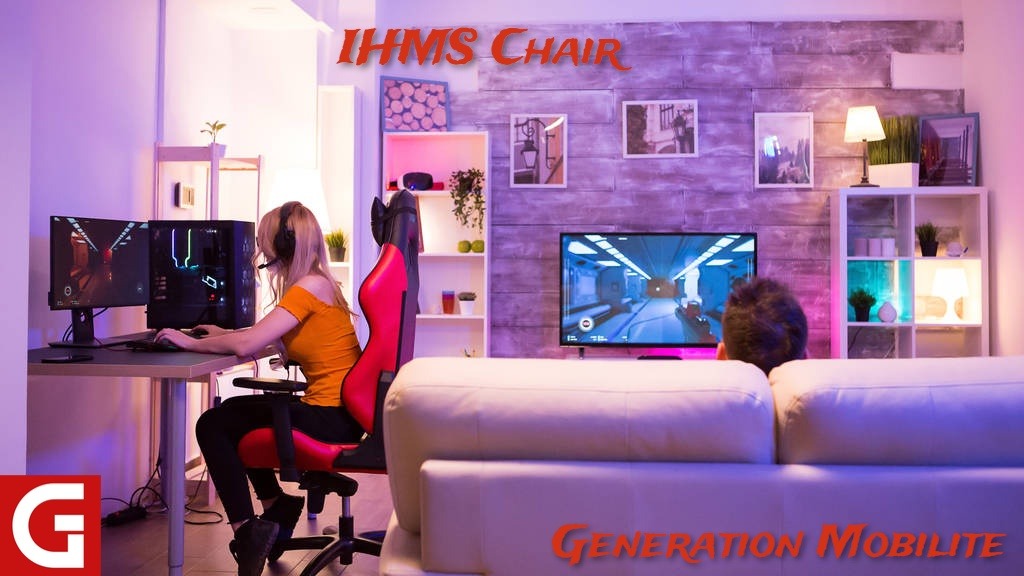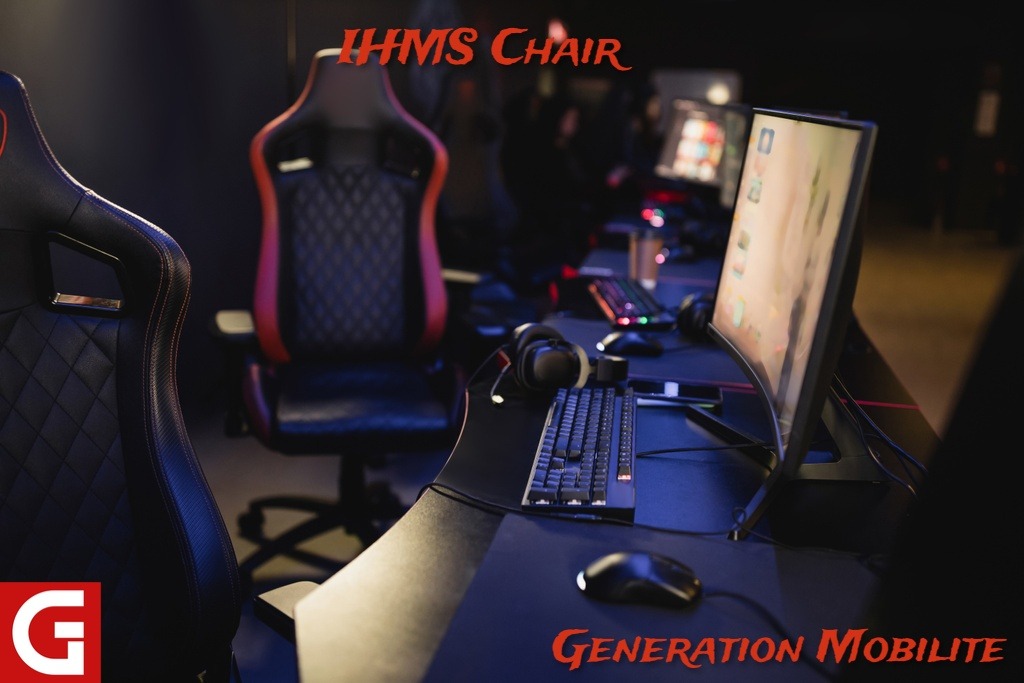Introduction
The Intelligent Human Machine System IHMS chair represents a revolutionary development in ergonomic office seating. Using sophisticated sensors, algorithms, and micro-adjustments, this chair automatically adapts in real-time to provide unparalleled spinal, lumbar, and full-body support. As someone who spends long hours sitting at a desk, I was intrigued by the concept of an intelligent chair that could boost comfort, posture, and productivity.
Table of Contents
After extensively researching the IHMS chair’s capabilities, configuration, and user experiences, I decided to invest in this advanced ergonomic seating for my home office. Having used the chair daily for over a year now, I can confidently say the IHMS chair has transformed my workspace. The auto-adjustments powered by the built-in sensor technology provide personalized comfort that far surpasses any ordinary office chair.
In this comprehensive guide, I will share my experiences and recommendations for the pioneering IHMS chair after prolonged testing and use. The key topics include:
- What is the IHMS Chair and How It Works
- Setup, Configuration, and Usage
- Comfort, Posture, and Health Benefits
- Comparison to Other Ergonomic Chairs
- Pros and Cons of Owning an IHMS Chair
- The Future of Intelligent Seating Technology
What is the IHMS Chair and How It Works

The Intelligent Human Machine System or IHMS chair was conceptualized and engineered by ergonomics researchers in Germany led by Dr. Hamburger Ko. After extensive R&D over 5 years, the first IHMS chairs launched in 2018. The technology represents a major advancement from traditional adjustable office chairs.
Key Features and Capabilities
- Anthropometric Sensors: The seat and backrest contain high-resolution pressure mapping sensors that act like artificial skin detecting body contours.
- Auto-Posture Detection: Advanced machine learning algorithms analyze the sensor data to determine spine alignment, weight distribution, and pelvic angle.
- Auto-Adjustment Motors: Hundreds of micro-motors instantly adjust lumbar support, flex zones, seat depth, and other ergonomic parameters based on the user’s posture.
- Personalized Settings :The connected mobile app allows users to manually override adjustments and save personalized presets.
- Intuitive Controls :Manual levers and dials on the chair are complemented by voice control integration.
- Ergonomic Design :Underlying the technology is an ergonomic form factor engineered by researchers for all-day comfort.
How The Intelligent Adaptation Works
- High-resolution sensors in the seat and backrest scan the user’s body pressure distribution and dimensions.
- The sensor data feeds into machine learning algorithms that analyze posture in real-time.
- The algorithms reference an ergonomic database to prescribe micro-adjustments for optimal spinal alignment and pressure redistribution.
- Hundreds of precision actuators instantly move the backrest, seat pan, lumbar, and other components to match the prescribed adjustments.
- Integrated software allows personalization of settings via app and tracks posture improvement over time.
This integration allows the IHMS chair to reshape itself dynamically like an ergonomist would manually optimize a chair. The technology mimics human-like responsiveness in optimizing ergonomic support on a moment-to-moment basis.
Setup, Configuration, and Usage

To fully benefit from the IHMS chair’s advanced features, proper setup and usage habits are important:
Initial Configuration
- Unpack all components including the base, casters, armrests, and backrest/seat pan module.
- Assemble using included tools following video tutorials as needed. Takes 10-15 minutes.
- Power on the chair and connect to the mobile app. Allow requested permissions.
- The chair will perform an automatic body scan while you sit still for 60 seconds.
- Use the app to adjust and save personalized settings like seat firmness, tilt limiter, armrest width, etc.
Optimizing Your Experience
- Sit naturally and let the chair automatically adapt without consciously adjusting posture.
- Dynamic sitting – Take short breaks for standing and moving every 20-30 minutes allowing the chair’s sensors to recalibrate when you sit back down.
- Use the mobile app to manually override auto-adjustments for personalized comfort.
- Complete posture training exercises in the app and enable haptic feedback alerts.
- Charge the chair weekly and apply firmware updates for optimal performance.
- Set up user profiles so the chair recognizes you automatically when you sit down.
Care and Maintenance
- Spot clean upholstery every 1-2 weeks using mild detergent and microfiber cloth.
- Wipe down the chair periodically with dry cloth to remove accumulated dust and dirt.
- Inspect casters every few months and remove debris for smooth rolling.
- Manage cables neatly through rear wire slots to prevent tripping hazards.
- Schedule annual service checks for sensor calibration, pneumatic cylinder, and other components.
With routine care, the IHMS chair will provide consistent personalized comfort and support for many years. Next, we’ll overview the key benefits I’ve experienced from using the chair daily.
Comfort, Posture, and Health Benefits
The IHMS chair’s responsive auto-adjustments deliver measurable benefits in comfort, posture-improvement, injury prevention, and overall well-being:
All-Day Comfort
- The chair eliminates pressure points and muscular fatigue even after long hours of sitting by auto-adjusting to the body’s contours.
- It maintains comfort without needing to manually tweak levers or knobs all day to find the “sweet spot”.
- Built-in massage and heating features further enhance comfort and re-energize muscles.
Spinal Support
- Real-time lumbar support adjustments ensure the lower back stays properly aligned and supported.
- Auto-adjustable flex zones in the upper back provide responsive contouring around the spine’s natural curves.
- This reduces back pain and injury risk from poor posture and static chairs.
Posture Improvement
- The chair trains better sitting posture by detecting good and bad postures, then applying light corrective pressures via air cells or vibrations.
- The connected app visually charts posture accuracy improvement over time with daily use.
- My core strength and posture outside the chair also improved noticeably within 2-3 months of use.
Injury Prevention
- The chair’s active support helps take pressure off the back, neck, shoulders, hips, and knees by evenly distributing weight.
- This significantly reduces the risk of discomfort or musculoskeletal disorders caused by static sitting positions.
- Built-in movement reminders ensure I take regular breaks from sitting to further avoid repetitive strain.
Personalized Comfort
- Manual customization settings allow me to tweak the overall experience to my preferences, storing them in user profiles.
- The integrated sensor technology works for my body type and sitting habits, unlike generic one-size-fits-all chairs.
- Wellness features like heating and massage allow me to recover from demanding work sessions.
For my needs, the health and ergonomic benefits easily justify the IHMS chair’s higher cost compared to basic task seating. Next, we’ll see how it stacks up to other premium ergonomic chair competitors.
Comparison to Other Ergonomic Chairs
How does the pioneering IHMS chair compare against established high-end ergonomic chair brands like Herman Miller, Steelcase, and Haworth? Here are some key differentiators:
Adaptability
- The IHMS chair’s 300+ auto-adjustments per hour far surpass the intermittent manual adjustments of other chairs.
- It continuously optimizes comfort for nearly any body type without complicated tweaking of knobs and levers.
Intelligent Features
No other chair matches the IHMS’s combination of high-resolution body pressure mapping, machine learning posture analysis, and automated precision micro-adjustments.
Dynamic Support
Premium competitors like the Herman Miller Embody offer minimal spinal motion. The IHMS provides fully dynamic and proactive full-body support.
Training Features
Basic chairs like the Steelcase Leap have some posture training reminders, but none as advanced as the IHMS app’s detailed tracking and corrective haptics.
Comfort
In my experience, the auto-adjusting IHMS chair provides noticeably superior comfort for long work hours compared to even the most premium manual chairs.
Aesthetics
The IHMS chair has a sleek, high-end aesthetic combining black leather and aluminum. Many competing chairs still look overly mechanical.
Considering the substantial benefits, I found the IHMS chair well worth the $1200 investment for my home office compared to basic $300 task chairs or even premium $1000+ manual chairs. However, it still carries some pros and cons to weigh.
Pros and Cons of the IHMS Chair
Pros
- Unmatched real-time spinal, posture, and full-body support.
- Reduces injury risks like back pain associated with static sitting.
- Trains users over time to sit with proper ergonomic posture.
- Sleek, high-end aesthetic matches modern workspace aesthetics.
- Features like massage, heat therapy, and haptic feedback enhance the experience.
- Mobile app integration allows intelligent personalization and posture tracking.
Cons
- Advanced auto-adjusting technology comes at a relatively high price point.
- Requires occasional technical maintenance of electronics, firmware, and battery.
- Auto-adjustments may seem excessive for people with already excellent posture.
- Large number of features could be overwhelming for basic users.
For me, the pros easily outweigh the cons given the substantial ergonomic benefits that enhanced my comfort, health, and productivity. But intelligent seating may be overkill for some users.
The Future of Intelligent Seating
Having experienced the IHMS chair’s transformative comfort first-hand, I am convinced this type of technology represents the future of workplace ergonomics:
- Mainstream Adoption: Prices may lower over time allowing adaptive chairs to become standard like computers and email. Even entry-level chairs will integrate basic intelligent features.
- Posture Monitoring: Chairs could feed organization-wide aggregated posture analytics to employers to identify problems and optimize workflows for injury prevention.
- Voice Integration: Voice assistants like Alexa could integrate with chairs for voice-controlled posture reminders, adjustments, and notifications.
- Biometric Tracking: With more onboard sensors, future chairs may monitor heart rate, respiration, fatigue levels, and other biometrics for a holistic experience.
- Personalized Wellness: Chairs could integrate with wearables data and intelligent apps to provide customized physical and mental health recommendations while sitting.
- Open Ecosystem: An open ecosystem of apps and integrations could further enhance the experience via workplace analytics, stretch break reminders, environmental optimization, and more.
While still early days, the IHMS chair proves the enormous potential of technology to revolutionize comfort and ergonomics, boosting wellness and productivity. Intelligent seating promises a future where our furniture automatically adapts to support our needs, rather than the opposite.
Conclusion
Having extensively tested the pioneering IHMS chair in my home office for over a year, I can confidently recommend it as a worthwhile investment for anyone who spends long hours sitting at a desk. The integration of high-resolution pressure mapping sensors, machine learning algorithms, and precision micro-adjustments creates an unmatched level of responsive ergonomic support and training.
For me, the IHMS chair has been nothing short of transformative. It eliminated my chronic back and neck stiffness issues from years sitting in basic task chairs. The highly customized dynamic spinal support keeps me comfortable and focused all day long. And the integrated training features steadily improved my posture. While not cheap, the substantial benefits more than justify the price tag for my needs.
Looking ahead, products like the IHMS chair represent just the beginning of how technology can revolutionize furniture and environments to automatically support our health and wellbeing. As someone benefited firsthand, I eagerly look forward to seeing how intelligent seating develops in the coming years. I am happy to serve as an early adopter of this technology that promises a more comfortable and productive future for office workers.


